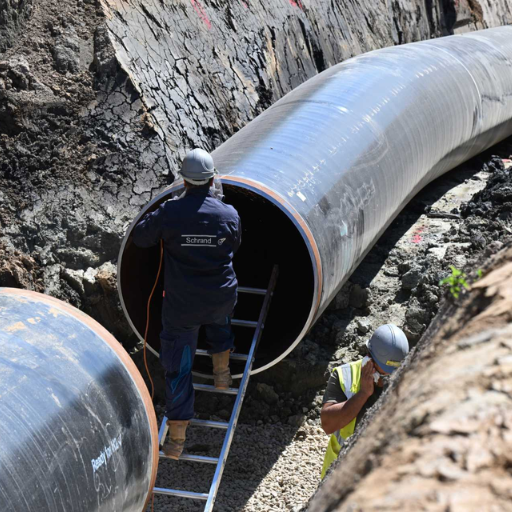Hydrogen pipelines have always been considered one of the most essential parts of the energy transportation system. The reason is that it offers a greener and more sustainable future. As hydrogen becomes increasingly attractive as a vital energy carrier, it is necessary to know how it is transported through pipelines. This paper examines elements involved in hydrogen pipeline systems, such as technical aspects of moving hydrogen in various forms and safety measures needed to prevent leaks while ensuring reliability during operations. Readers can, therefore, find out what makes up a hydrogen pipeline, its function in the energy transition process, and safety precautions for deploying them.
What is a Hydrogen Pipeline?
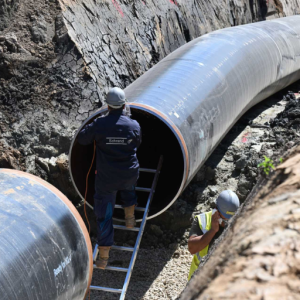
Image source: https://www.latitudemedia.com/
A hydrogen pipeline is an infrastructure to convey gaseous or liquid hydrogen from production centers to storage facilities or end users like consumers and industries. Whether it’s gas or liquid form carried by these pipes depends on transport needs at any given time, but either way, they are designed specifically for this purpose alone. Materials used in making them must resist effects brought about by some unique properties of hydrogen, including small molecular size and the ability to make certain metals brittle. This means that the selection of design type along with materials should take into account these considerations so that safety can be guaranteed all through its life cycle–from manufacture until disposal when no longer needed for service delivery efficiency, reliability, convenience, sustainability effectiveness, integration distribution utilization supply chain industrial processes fuel cell vehicles power generation among other relevant uses applications.
Basics of a hydrogen pipeline
To guarantee the hydrogen supply chain, designers of hydrogen pipelines must follow specific engineering principles. Pipe materials are usually made of steel alloys or composites that can withstand embrittlement caused by hydrogen. Monitoring systems for detecting leakage and pressure changes are installed on pipes to ensure the integrity of the transportation system. It is important to note that hydrogen’s flow rate, energy efficiency, and overall transport capacity depend on the pipe diameter and its layout, which determines whether it is a straight line. To ensure safety measures are met every time, regular checks and strict regulations should be followed, thus making hydrogen pipelines an integral part of sustainable energy infrastructure.
Differences between hydrogen and natural gas pipelines
My study of natural gas and hydrogen pipelines revealed that they differ in many aspects, such as design, materials used, and operational considerations. Hydrogen, a smaller, lighter molecule than natural gases, requires its pipelines to be more resistant to brittleness or leaking through the wall material. For example, usual steel can be utilized when constructing pipelines for transporting natural gas, but sometimes advanced steel alloys or composites need to be used to reduce dangers brought about by permeation with hydrogen. Additionally, the pressures required while transporting this gas are higher, necessitating more vital containment methods. Further, since these cater to different sources of power, regulatory frameworks may also differ considerably wildly for clean energy market growth, where rules governing the use of renewable resources tend to change rapidly over time.
Critical components of hydrogen pipeline infrastructure
The main components of the hydrogen pipeline infrastructure are as follows:
- Pipelines: These pipes are made for hydrogen transportation and can use more advanced materials to prevent embrittlement or ensure integrity under higher pressures.
- Compressor Stations: These stations are needed to maintain pressure levels during long-distance transport. They also help control flow rate and energy efficiency.
- Storage Facilities: Storage facilities store hydrogen until it is ready for distribution at end-use points or distribution centers. They can be above ground or underground, designed with hydrogen’s unique properties in mind.
- Regulators and Safety Devices: Safety is paramount in any system dealing with hydrogen; regulators regulate pressure changes within the system, while automatic shut-off valves detect leaks or other abnormalities that could cause destruction.
- Monitoring Systems: Real-time monitoring systems use state-of-the-art technology to monitor pressure, flow rates, and any potential leakage points, thereby ensuring safer operations and improvements in reliability.
Together, this infrastructure allows for efficient and safe distribution of hydrogen as a green energy source.
How is Hydrogen Transported through Pipelines?
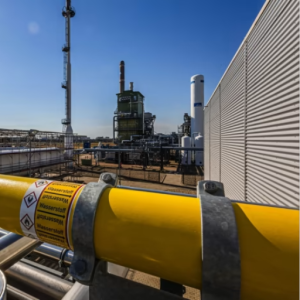
The gaseous state is the primary method of transporting hydrogen through pipelines. This requires a system that adjusts pressure levels and minimizes any losses. To enable efficient long-distance travel, hydrogen is compressed at compressor stations. The pipelines are made from materials designed for hydrogen’s unique properties and to prevent issues such as embrittlement. To guarantee safety, regulators set pressure levels while monitoring systems continuously check for leaks, ensuring the pipeline’s integrity throughout its length. This attention to detail enables the successful and safe transport of hydrogen, thereby making it a practical energy carrier.
Methods of hydrogen transportation
Different methods can be used in the transportation of Hydrogen depending on various needs or infrastructure capabilities, thus;
- Pipelines: As mentioned, H2 may also be moved using specific pipe fittings that consider its unique characteristics. Depending on the required temperature and pressure, these pipes can be constructed for either gaseous or liquid form.
- Compressed Gas Cylinders: Hydrogen storage tanks, also known as gas bottles, at high pressures are another way to store hydrogen for future use. This technique is most applicable to small quantities and applications because it allows mobility flexibility during delivery to end users.
- Transportation in Liquid State: For very long distances, Cryogenic temperatures (-253 degrees Celsius) are used to cool down H2, hence liquefaction. This approach increases storage density, so it is often employed when shipping across oceans using specialized tankers’ designs.
Different markets can easily access Hydrogen through these techniques, thus advancing its adoption as clean energy across all sectors.
Challenges in transporting hydrogen gas
There are several difficulties in transporting hydrogen, which could affect its efficiency and safety. First, hydrogen has a low energy density when in its gaseous state; hence, high-pressure systems are required, thus making infrastructure development complex. Safety is also a significant concern because hydrogen is highly flammable, therefore necessitating strict compliance with safety rules to avoid leaks and explosions. Moreover, pipeline materials must be compatible with hydrogen so as not to become brittle over time due to embrittlement, eventually leading to structural failures. Last, the economic viability of transporting hydrogen largely depends on regional demand and existing infrastructure; hence, comprehensive strategies must be formulated considering cost-effectiveness alongside safety measures and environmental concerns.
Safety measures for hydrogen transportation
During my study about the safe transportation of hydrogen gas, I realized that stringent precautions should be taken to prevent any accident caused by its combustibility and low energy content. Primarily, frequent checks should be done on pipelines or storage tanks through routine maintenance activities aimed at identifying weak points or leakages. Furthermore, using modernized construction materials that do not undergo embrittlement when exposed to this element can significantly improve the strength of infrastructures. Equally important is providing adequate training for workers handling such fuel to know all safety rules and emergency response procedures. Finally, setting up monitoring systems with broad coverage areas coupled with the use of advanced sensors will instantly detect abnormality signs, thereby ensuring safe delivery during the transition towards cleaner sources of power like hydrogen energy.
What are the Safety Concerns for Hydrogen Pipelines?
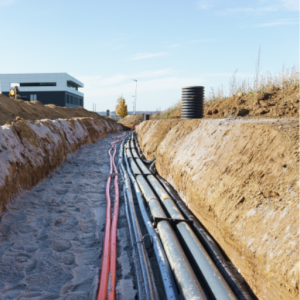
The hydrogen has many safety problems when it is being transported through the pipelines due to the unique properties of this element. First, there is a significant risk caused by its high flammability because any kind of leak may result in an explosive environment if ignited. Besides that fact, another issue exists – hydrogen embrittlement, which appears in metals and influences the pipeline’s strength over time, requiring unique materials for such cases. In addition, low-energy denseness demands carefulness during handling and storage; otherwise, it can lead to high pressure. Last but not least, leaks can happen anywhere, anytime; therefore, monitoring should be kept as well, and periodic inspections should be carried out for the safe use of hydrogen pipeline systems. This will help build trust among people toward clean energy from hydrogen fuel cells, portable tanks, etcetera.
Risks associated with hydrogen embrittlement
One primary concern related to transporting or storing hydrogen is called “hydrogen embrittlement,” which refers to the degradation of mechanical characteristics in metals caused by the interaction between metal atoms and atomic hydrogen species. Hydrogen diffusing into steel structures causes brittleness, making them crack more easily under pressure, thus reducing their strength considerably before they break apart completely. However, these failures are usually sudden without any warning signs appearing visible until everything collapses around us so fast, like an explosion! The various levels of susceptibility displayed by different steels imply that it may attack some metals more than others, i.e., those made from stronger alloys such as high carbon content steels. Designing against stress concentration zones and frequent checks for materials susceptible to dystrophy could help minimize risks associated with this problem. At the same time, proper environmental conditions like temperature control can prevent occurrence.
Pipeline safety standards and regulations
I’ve seen that pipeline safety requirements and regulations are essential for safe hydrogen transportation. Usually, these rules establish a model through government agencies and industrial groups to handle the unique challenges hydrogen properties pose. For example, in the US, the Pipeline and Hazardous Materials Safety Administration (PHMSA) mandates design criteria, construction specifications, operational standards, and maintenance procedures for pipelines used to move hydrogen. It is also necessary to comply with American National Standards Institute (ANSI) and National Fire Protection Association (NFPA) guidelines to reduce risks associated with these facilities. Such laws help reduce dangers through strict tests, frequent checks, and continuous surveillance while at the same time ensuring reliability, which enhances confidence among members of the public about safety aspects related to hydrogen energy use.
Technological advancements in pipeline safety
Technological advancements recently significantly contributed to improving pipeline safety standards, especially during transportation involving hydrogen gas. For instance, intelligent systems that monitor pipes enable real-time measurement of parameters like pressure and flow rate, as well as the detection of leakages using IoT-linked sensors, hence prompting quick actions whenever deviations occur. Additionally, composite materials enhance resistance against embrittlement caused by H2, together with other types of fatigue experienced by such structures. Predictive analytics are fuelled by machine learning adaptive maintenance strategies through analyzing historical records aimed at predicting failures before they happen, while automated robotic inspections offer detailed assessments concerning integrity within areas that are difficult to access, thereby increasing levels of safety while reducing human exposure risks. These improvements heighten protection accorded to pipelines carrying this new power source and contribute significantly towards effectiveness during its transportation methods.
How Does Hydrogen Blending Work in Existing Gas Pipelines?
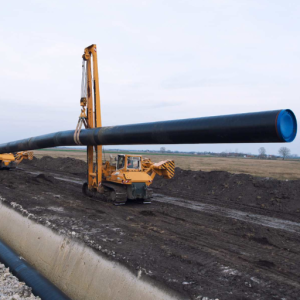
Hydrogen blending is mixing hydrogen and natural gas in the existing pipeline infrastructure. This allows for the slow integration of hydrogen into the energy supply and takes advantage of the wide-reaching natural gas pipeline system already in place. Typically, hydrogen can be blended at concentrations up to 20% by volume without significantly changing current systems. After being transported along pipes, the blend can be used by households, businesses, and power plants. However, it is essential to manage this process carefully to meet safety regulations and not affect pipeline materials or appliances designed for use with natural gas. Monitoring and adjusting blending ratios to maintain optimal performance and safety levels throughout distribution networks is critical.
Concept of blending hydrogen into natural gas
Blending hydrogen into natural gas represents a strategic option for reducing carbon emissions, simultaneously exploiting existing infrastructural bases. This method involves mixing specified amounts — generally up to 20% — of Hydrogen and Natural Gas, creating hybrid fuel(s). The process allows for less carbon-intensive fuel by enabling cleaner energy sources like hydrogen to replace some fossil fuels within energy mixtures. Blended gases travel through similar pipes and thus can be used in typical appliances or vehicles with minimal modifications. While also requiring careful monitoring vis-a-vis compatibility towards materials used in pipelines, this move should adhere strictly to safety rules lest compromise the appliance’s integrity due to its design parameters based upon those applicable only under normal usage conditions. Monitoring has been made mandatory during the transition phase from fossil fuel utilization towards renewable sources such as wind farms, etcetera, not just because we want clean electricity but also considering other factors like associated security risks.
Benefits of blending hydrogen
There are a lot of benefits to blending hydrogen with natural gas, all of which I think are compelling. First, it reduces greenhouse gas emissions significantly, which is essential in the fight against climate change. We can reduce our carbon footprint and use the same gas infrastructure if we swap some fossil fuels out for hydrogen. My second favorite thing about this idea is that it diversifies energy sources– that way, if one goes down, we’re not left high and dry. It also makes things more resilient. Another great point on their side is how little we would have to change things over; right now, appliances and pipelines would have to be torn up or built new, but with hydrogen mixed in, it’ll be much easier. This plan not only supports environmental goals but also promotes greater energy efficiency.
Impact on existing gas infrastructure
However, integrating hydrogen blending into existing gas infrastructure has its own challenges and opportunities. There seem to be no significant problems with transporting mixed gases through pipelines already in place, though we still need more information on how they affect these materials over time. Nevertheless, experts suggest long-term impact assessment studies should be done since some parts could be corrupted due to increased concentration levels; therefore, a continuous monitoring system must be implemented with frequent checks to detect such conditions early enough before worsening occurs. It has been found out by research conducted so far that up to 20% hydrogen can be blended without making any significant changes on natural gas lines, but beyond this point, degradation starts taking over; thus, a need arises for thorough inspections done at regular intervals alongside strict guidelines followed during testing process involved when dealing with high mixtures like those containing hydrogen which burns faster than typical fuel gases.
What is the Future of Hydrogen Pipelines?
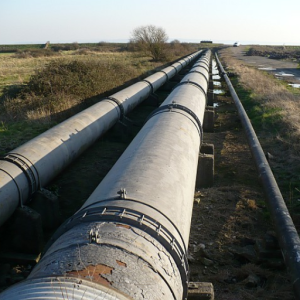
The future of hydrogen pipelines is promising, driven by the increasing demand for clean energy options and the need to decarbonize. Investments in hydrogen infrastructure are expected to increase as regulatory frameworks change to support hydrogen as a viable energy source. Renewable hydrogen production and storage integration systems will also make long-range pipeline networks possible. Furthermore, research is ongoing to find better pipeline materials and technologies that can enhance resistance against hydrogen-related problems while guaranteeing their durability over time. Ultimately, establishing a solid hydrogen pipeline system could catalyze low-carbon economies, thereby supporting industries and communities in their quest toward energy transformation.
Development of new hydrogen pipelines
The development of fresh networks for conveying hydrides plays a critical role in promoting wider use adaption this fuel-source. Minor details involve using appropriate materials capable of surviving embrittlement caused by exposure to H atoms and unique properties. Furthermore, governments may offer incentives or collaborate with private sector partners on financing projects so they can be implemented quickly enough; worldwide there are already several large-scale ventures being undertaken which have attracted significant investment from different states looking forward meeting climate change commitments through building up these infrastructures. Needing careful safety planning around compliance with regulations ensures successful integration into existing networks.
Integration with renewable energy sources
Combining hydrogen with sustainable energy sources is an effective way to solve the problem of energy storage and stabilize the grid. Hydrogen can be generated using electrolysis, which involves using surplus electricity created from wind or solar power. In other words, it is possible to convert extra energy into hydrogen through this process so that it can be stored as a portable fuel. Furthermore, it also makes sense to mix hydrogen with natural gas in current pipelines because it allows them to reduce their carbon footprint while making use of existing infrastructure at the same time. For instance, Germany and Japan have taken the lead on such projects by developing strategies incorporating this gas into their power systems as part of broader attempts towards sustainability and independence from fossil fuels.
Role in the hydrogen economy
The part that hydrogen plays in the evolving hydrogen economy is complex and offers chances of decarbonization in various sectors. The greenhouse gas emissions are reduced by using hydrogen as a vital medium, mainly in industries that cannot easily be electrified, like chemical manufacturing or steel production. Moreover, it can stabilize the grid and enable long-term storage for energy, which helps create a resilient energy system, especially where intermittent output is experienced due to renewable energy sources. With heavy investments by countries and corporations into hydrogen technologies, fuel cells will find new markets while paving the way for sustainable global climate-friendly infrastructure development in the energy field. This could be done through collaboration among governments, industries, and researchers, forever changing energy landscapes and spurring economic growth against climate change mitigation efforts.
Reference sources
- Hydrogen Pipeline Safety and Challenges
- Report: Safety of Hydrogen Transportation by Gas Pipelines
- Hydrogen Pipelines
Frequently Asked Questions (FAQs)
Q: What is the hydrogen pipeline, and how does it function?
A: A hydrogen pipeline is a dedicated infrastructure transporting hydrogen from production sites to end users. Hydrogen is produced using various methods, including electrolysis and natural gas reforming. Depending on the system design and requirements, the pipeline can transport gaseous hydrogen or liquid hydrogen.
Q: How does the Natural Gas Act impact hydrogen pipelines?
A: The Natural Gas Act primarily governs the interstate transportation of natural gas, but it also has implications for hydrogen pipelines. As hydrogen becomes more integrated into the energy market, regulations under the Natural Gas Act may need to be updated to accommodate hydrogen transport’s unique properties and safety requirements.
Q: What are the critical differences between transporting gaseous and liquid hydrogen?
A: Gaseous hydrogen is typically transported at high pressures, making it suitable for short and medium distances. On the other hand, liquid hydrogen is cryogenically cooled and transported at very low temperatures, making it more energy-dense and ideal for long-distance transport. Both methods require specialized infrastructure and safety measures.
Q: Can existing natural gas pipelines be used for hydrogen transport?
A: Yes, existing natural gas pipelines can be repurposed for hydrogen transport, often by blending hydrogen with natural gas or converting the pipelines to carry pure hydrogen. However, this requires careful consideration of material compatibility and safety standards, as hydrogen can cause embrittlement in certain steel pipelines.
Q: What is the European hydrogen backbone?
A: The European hydrogen backbone is a proposed network of hydrogen pipelines across Europe. It aims to connect hydrogen production hubs with major industrial and consumption centers, facilitating the development of a clean hydrogen market and supporting the transition to a hydrogen-based energy system.
Q: What role does hydrogen storage play in the hydrogen pipeline infrastructure?
A: Hydrogen storage is a critical component of the hydrogen pipeline infrastructure. It allows for the balance of supply and demand, ensuring a stable hydrogen energy supply. Storage solutions can include underground caverns, pressurized tanks, and liquid hydrogen reservoirs, all of which help manage the intermittent nature of hydrogen production and consumption.
Q: What safety measures are necessary for hydrogen pipelines?
A: Safety measures for hydrogen pipelines include rigorous material selection to prevent embrittlement, regular inspection and maintenance, leak detection systems, and adherence to strict regulatory standards. Due to the high flammability and diffusivity of hydrogen, pipelines for hydrogen must be designed with comprehensive safety protocols to prevent accidents.
Q: How does a dedicated hydrogen pipeline infrastructure benefit the hydrogen market?
A: A dedicated hydrogen pipeline infrastructure facilitates efficient hydrogen delivery, reduces transportation costs, and supports large-scale hydrogen projects. It also helps establish a reliable hydrogen distribution network, which is essential for the growth of the hydrogen market and the broader adoption of hydrogen fuel in various sectors.
Q: What are the challenges faced by pipeline developers in establishing new hydrogen pipelines?
A: Pipeline developers face several challenges in establishing new hydrogen pipelines, including high initial investment costs, regulatory hurdles, material compatibility issues, and the need for extensive safety measures. Additionally, integrating hydrogen pipelines with the existing gas network and ensuring public and industrial acceptance are critical factors that developers must address.
Q: What is the future outlook for hydrogen pipelines and the energy sector?
A: The future outlook for hydrogen pipelines and the hydrogen energy sector is promising, with increasing investments in hydrogen projects and developing a comprehensive hydrogen backbone. As clean hydrogen becomes a key component of global energy strategies, the demand for efficient hydrogen distribution and storage solutions will continue to grow, driving innovation and expansion in the hydrogen pipeline infrastructure.



